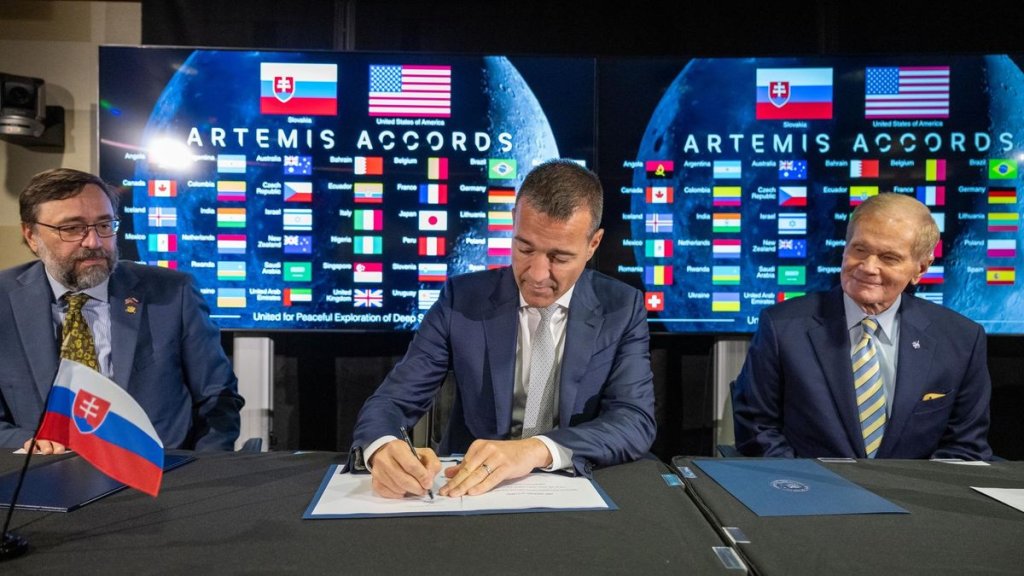
Peru and Slovakia sign the Artemis Accords for peaceful moon exploration (Image Credit: Space.com)
This week, two more nations signed the Artemis Accords.
NASA held a ceremony at its headquarters in Washington, D.C. on Thursday (May 30) to host representatives from both Slovakia and Peru. During the event, both countries signed the agency’s Artemis Accords, a set of principles that aims to lay out a framework for peaceful cooperation in space and on the moon.
The addition of these two nations brings the total of signing countries to 42. The Artemis Accords were first launched and signed in October 2020 by eight nations, including the United States.
Related: Artemis Accords: What are they & which countries are involved?
NASA chief Bill Nelson lauded the addition of both countries in two separate agency statements.
“The United States and Slovakia share a deep understanding of the power of exploration. Through this new chapter in our nations’ partnership, we will further this global coalition to explore the cosmos openly, responsibly, in peace,” Nelson said of Slovakia’s participation. The country’s Minister of Education, Research, Development and Youth, Tomáš Drucker, signed the Accords on behalf of Slovakia.
Similarly, the NASA administrator said in a separate statement that the “giant leap forward” for Peru and the United States is the “result of decades of work Peru has done to further its reach in the cosmos.” Javier González-Olaechea, Peru’s foreign minister, signed the Accords on behalf of the nation.
While the Artemis Accords seek to establish a set of norms for space exploration in general, they have a strong focus on the moon, hence why they share a name with NASA’s Artemis program of human moon exploration missions.
Through the Artemis program, NASA and its international partners aim to establish a permanent and sustainable human presence on the moon by around the end of the decade. The campaign has launched one mission thus far, Artemis 1, which sent the uncrewed Orion spacecraft around the moon and back in late 2022.
Developing the infrastructure needed to sustain a human presence on the moon will be a much more ambitious undertaking, and NASA will need to cooperate with international partners to make it all happen, the agency has stressed.
Some nations that have signed on to the Accords are already well-established in space, such as France, Germany, India, Israel, Japan, South Korea and the United Kingdom.
China is also eyeing its own permanent presence on the moon, and aims to develop the International Lunar Research Station in the 2030s alongside its partners such as Russia, Ethiopia, Kenya and Azerbaijan.








